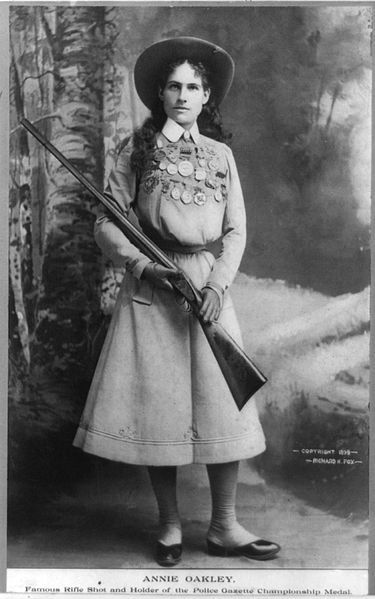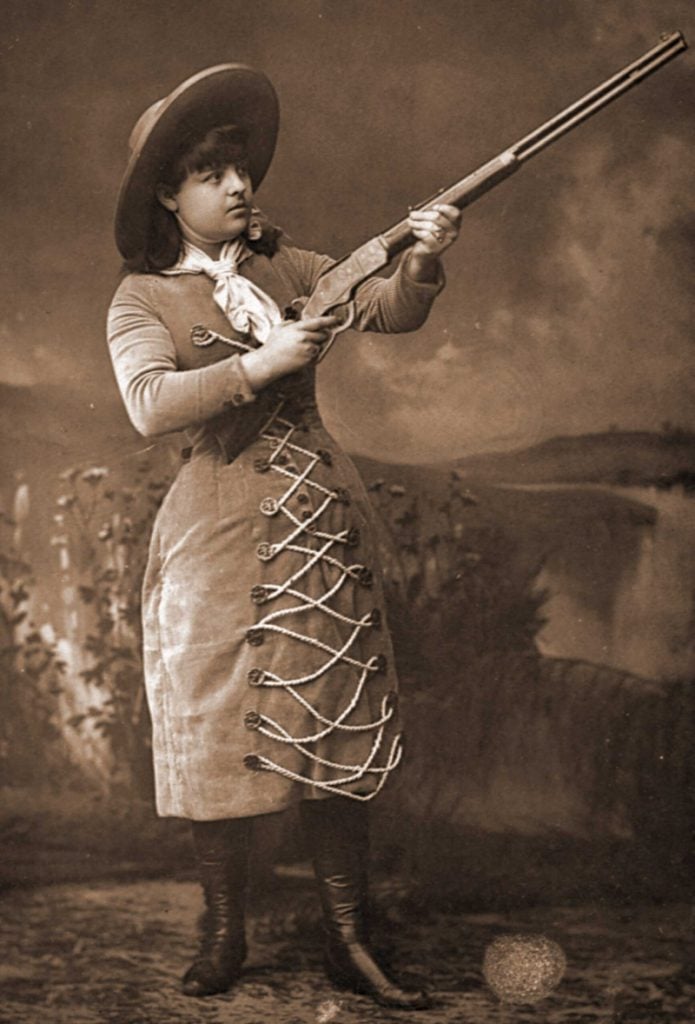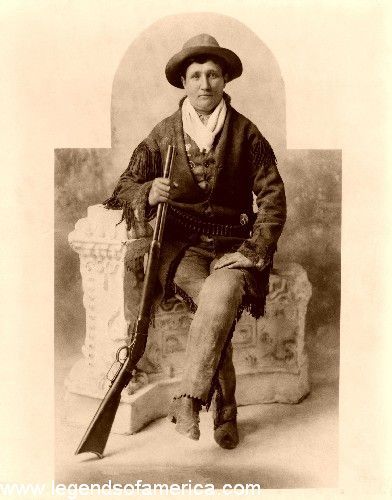
Beyond the Six-Shooter’s Shadow: The Fearless Female Marksmen of the American West
The popular imagination of the American West is often dominated by the stoic, rifle-toting cowboy, a figure of rugged masculinity carving out a life on the frontier. Yet, beneath this familiar silhouette, and often standing defiantly beside or even in front of it, were women of extraordinary grit, skill, and courage. These weren’t merely passive bystanders; they were sharpshooters, outlaws, entertainers, and protectors who wielded firearms with a proficiency that challenged gender norms and etched their names into the annals of history. Their stories, often sensationalized, sometimes tragic, collectively paint a vibrant portrait of female agency in a world that expected submission.
The era of the Wild West, roughly from the mid-19th to the early 20th century, was a crucible of rapid expansion, lawlessness, and the forging of new identities. For women, this period offered both unprecedented challenges and unique opportunities for independence. A firearm, in this untamed landscape, was often not a luxury but a necessity – for defense against outlaws, Native American tribes, wild animals, or simply as a tool for hunting and survival. But for some, the gun became an extension of their will, a symbol of their defiance, and for a select few, a ticket to fame.
Annie Oakley: The "Little Sure Shot" Who Redefined Marksmanship

No discussion of female shooters of the West can begin without Annie Oakley, born Phoebe Ann Mosey in rural Ohio in 1860. Her journey from humble beginnings to international stardom is a quintessential American tale. Poverty forced her to hunt small game to feed her family, and it was in these woods that her uncanny talent with a rifle emerged. By age 15, she was already a local legend, selling her game to hotels and restaurants with remarkable consistency.
Her life changed forever in 1881 when she challenged Frank Butler, an acclaimed exhibition shooter, to a shooting match in Cincinnati. To Butler’s astonishment, Oakley not only matched him but defeated him. He was so captivated by her skill and charm that he married her the following year, becoming her manager and partner.
Annie Oakley’s precision was legendary. She could shoot a dime tossed into the air, hit the thin edge of a playing card from 30 paces, or extinguish a candle flame with a single shot. Her most famous act involved shooting a cigarette held between her husband’s lips – a feat that amazed audiences and demonstrated an almost unbelievable level of control. It was Sitting Bull, the famous Lakota leader, who, after witnessing her prowess, affectionately dubbed her "Little Sure Shot," a moniker that would follow her for life.
Oakley joined Buffalo Bill’s Wild West show in 1885, catapulting her to global fame. She performed for royalty, including Queen Victoria and Kaiser Wilhelm II, captivating audiences across Europe and America. Her act was more than just a display of skill; it was a performance that subtly challenged Victorian notions of female delicacy. Dressed in sensible but stylish attire, she exuded confidence and grace, proving that a woman could be both feminine and fiercely capable. Her legacy wasn’t just in her marksmanship but in her ability to break barriers, inspiring countless women to pursue their passions. She famously advised, "Aim for a high mark, and you will hit it."
Calamity Jane: The Wild Woman of the Plains
In stark contrast to Oakley’s refined precision stood Martha Jane Cannary, better known as Calamity Jane. Born in 1852, her life was a whirlwind of adventure, hardship, and myth-making. Less a sharpshooter of exhibition and more a survivor of the rugged frontier, Jane’s reputation as a hard-drinking, cross-dressing scout and companion to Wild Bill Hickok cemented her place in Western lore.
While her marksmanship was never as celebrated or documented as Oakley’s, Jane was undeniably proficient with firearms, essential for her life on the plains. She dressed in men’s clothing, rode like a man, and was often seen carrying a rifle and a pistol. Her skills were employed in practical, often dangerous, situations: scouting for the U.S. Army, driving stagecoaches, and navigating the perilous Black Hills during the gold rush.
Calamity Jane’s life was a testament to raw independence and defiance against societal expectations. She embraced a life of freedom, albeit one fraught with hardship and a notorious fondness for alcohol. Her stories, often exaggerated by dime novelists, painted her as a fearless frontierswoman who could hold her own against any man. While the exact details of her shooting prowess remain shrouded in legend, her willingness to live by her own rules and her constant presence with firearms made her an iconic figure of female empowerment, albeit a more rugged and less polished one than Oakley.

Belle Starr: The Bandit Queen
Moving from the realm of entertainment and survival to outright outlawry, Myra Maybelle Shirley Reed Starr, or Belle Starr, embodied the dangerous allure of the Wild West’s criminal element. Born in Missouri in 1845, Starr grew up amidst the chaos of the Civil War, which profoundly shaped her life. Her family’s Southern sympathies and her association with notorious Confederate guerrillas like the Younger and James gangs set her on a path of rebellion and crime.
Belle Starr was no ordinary outlaw. She was educated, played the piano, and yet chose a life intertwined with horse thievery, cattle rustling, and harboring fugitives. She was often depicted as riding sidesaddle, dressed in black velvet, with two pistols strapped to her hips – a striking image of a woman who defied societal expectations of domesticity. While her direct involvement in shootouts is less documented than her organizational and strategic role in criminal enterprises, she was known to be proficient with firearms and carried them regularly.
Her reputation as the "Bandit Queen" was solidified by dime novels that romanticized her life, painting her as a daring, intelligent, and dangerous woman. Starr reveled in this notoriety, cultivating her image as a defiant figure. Her life ended violently in 1889, ambushed and shot, with the killer never definitively identified. Belle Starr represents the darker, more rebellious side of female firearm use in the West – not for sport or survival, but as an integral part of a life lived outside the law.
Pearl Hart: The Audacious Stagecoach Robber
Another remarkable figure who wielded a gun for criminal ends was Pearl Hart, arguably one of the few women to successfully rob a stagecoach. Born in Canada in 1871, Hart’s journey to infamy began when she moved to the American West, seeking adventure and escape from a tumultuous marriage.
In 1899, desperate for money, Pearl Hart and her accomplice, Joe Boot, planned and executed a stagecoach robbery in Arizona. To avoid detection, Hart reportedly cut her hair short and disguised herself as a man. Armed with a .38 revolver, she held up the stage, making off with approximately $400 and a gun from a passenger. Her audacity and the sheer novelty of a woman committing such a crime instantly propelled her into the national spotlight.
Captured shortly after the robbery, Hart became a sensation. During her trial and subsequent imprisonment, she played into her notoriety, giving interviews and posing for photographs. She used her gender to garner sympathy, even famously stating, "I shall not consent to be tried under a law which denies women the right to vote or hold office." While her career as an outlaw was brief, Pearl Hart’s story is a powerful example of a woman who, driven by desperation and a thirst for freedom, picked up a gun and challenged the deeply entrenched gender roles of her time, even in the realm of crime.
Stagecoach Mary Fields: The Fearless Mail Carrier
Beyond the entertainers and outlaws, there were women who carried guns out of sheer necessity for their daily work, none more formidable than Mary Fields, affectionately known as "Stagecoach Mary." Born enslaved in Tennessee around 1832, Fields’ life story is one of incredible resilience and strength. After emancipation, she made her way to Montana, where, in her 60s, she became the first African American woman to be employed by the U.S. Postal Service as a star route mail carrier.
Mary Fields was a force of nature. Standing over six feet tall and weighing over 200 pounds, she was known for her immense physical strength, her quick temper, and her unwavering dedication to her duties. She carried a .38 Smith & Wesson revolver and a shotgun, not for show, but for protection against wolves, bandits, and any other dangers that might threaten the mail on her treacherous route through the Montana wilderness.
Her fearlessness was legendary. Stories abound of her fending off wolves, chasing down robbers, and never missing a day of work, regardless of the weather. She was fiercely independent and commanded respect from everyone she encountered. When she retired from the postal service, she opened a laundry service and continued to be a beloved and respected figure in her community until her death in 1914. Stagecoach Mary’s use of firearms was not about fame or crime, but about the practical application of skill and courage to perform a vital service in a dangerous environment, breaking both racial and gender barriers in the process.
The Enduring Legacy
The stories of Annie Oakley, Calamity Jane, Belle Starr, Pearl Hart, and Stagecoach Mary, along with lesser-known figures like Poker Alice (a gambler who famously carried a .38 revolver and a Bowie knife) or Rose Dunn (the "Rose of Cimarron," who aided the Doolin-Dalton gang), illustrate the diverse roles firearms played in women’s lives in the American West.
These women, each in their own way, challenged the prevailing Victorian ideals of womanhood. They proved that courage, skill, and independence were not exclusive to men. Whether on the stage, the open prairie, or the wrong side of the law, they wielded their weapons not just as tools, but as instruments of their will, carving out lives on their own terms.
Their legacies are complex, often blurred by myth and sensationalism, but undeniably powerful. They remind us that the narrative of the American West is far richer and more nuanced than often portrayed. These fearless female marksmen shattered stereotypes, leaving an indelible mark on history and inspiring future generations to look beyond conventional boundaries and embrace the full spectrum of human potential, even with a six-shooter in hand. Their stories continue to resonate, reminding us that true strength knows no gender, especially when confronted with the untamed spirit of the American frontier.


